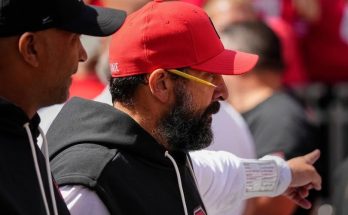The 2006 BCS National Championship game between the Texas Longhorns and the USC Trojans remains one of the most iconic and memorable games in college football history. Played on January 4, 2006, at the Rose Bowl in Pasadena, California, this matchup not only crowned a national champion but also delivered a breathtaking display of skill, determination, and drama that has since been hailed as the best college football game of the 2000s decade. Nearly two decades later, the significance and excitement of that contest have only grown, with fans, analysts, and historians alike celebrating it as a classic that redefined what championship football could be.
At the heart of the 2006 title game was a clash between two storied programs, each boasting remarkable talent and championship aspirations. The USC Trojans, coached by Pete Carroll, entered the contest as heavy favorites. They were riding a 34-game winning streak, a feat unprecedented in modern college football, and were led by Heisman Trophy-winning quarterback Matt Leinart, along with a roster packed with NFL-caliber stars including Reggie Bush, LenDale White, and Steve Smith. USC’s dominance during the 2005 season had been so overwhelming that many pundits and fans expected them to cruise to yet another national title.
Opposing them were the Texas Longhorns, guided by the legendary coach Mack Brown. Texas had built an impressive 2005 season marked by resilience, grit, and a balanced offensive attack spearheaded by Vince Young, a dynamic quarterback with the ability to make plays both in the pocket and on the ground. The Longhorns also had a stout defense and a supportive cast of talented players like linebacker Michael Huff and wide receiver Limas Sweed. While Texas had a strong team, they entered the game as clear underdogs, facing a USC team that many considered unbeatable.
The stage was set for an epic showdown, and the game did not disappoint. From the opening kickoff, the intensity was palpable. USC struck first, asserting their dominance early with a touchdown run by LenDale White. Their offense moved methodically and efficiently, showcasing the precision and power that had made them the top-ranked team for much of the season. However, Texas refused to be intimidated. Vince Young led the Longhorns on a scoring drive that ended with a touchdown pass, signaling that Texas was more than just a match for USC’s vaunted defense.
As the game progressed, the momentum swung back and forth. Both teams traded blows, neither willing to cede ground in what had become a fiercely competitive battle. The second quarter saw USC take the lead again with a touchdown pass from Leinart, but Texas responded with a field goal. The defenses on both sides made crucial stops, and the fans in the Rose Bowl witnessed a chess match of strategy and skill unfold on the field.
But it was the second half that truly defined this game as one for the ages. The Longhorns showed incredible resilience, clawing back from a deficit to stay in contention. Vince Young’s athleticism and leadership became more evident as he repeatedly made clutch plays, using his legs and arm to move the chains and keep Texas’s hopes alive. The Trojans, though, continued to fight valiantly, with Matt Leinart delivering precise throws and their running game grinding out tough yards.
The defining moment of the game came in the final minutes of the fourth quarter. With just under six minutes remaining, USC held a 38-33 lead, and the Trojans appeared poised to extend their winning streak and claim another national championship. Texas had the ball deep in their own territory, needing a touchdown to take the lead. What followed was a series of plays that have been etched into college football lore forever.
Vince Young orchestrated an 11-play, 61-yard drive that was nothing short of spectacular. On third-and-five, Young scrambled to evade defenders, showing incredible toughness as he took a hit but managed to complete a crucial pass. Then came the iconic moment that would define Young’s legacy: with just 19 seconds left, and facing third-and-five at the USC 5-yard line, Young took the snap, rolled to his right, and lunged into the end zone for a touchdown. The stadium erupted as the Longhorns took a 41-38 lead, stunning the Trojans and their fans.
That touchdown run was not only a thrilling athletic feat but also a testament to Young’s poise under pressure and competitive spirit. It capped off a game in which he accounted for 467 total yards and three touchdowns, performances worthy of the game’s Most Valuable Player award. The Longhorns’ victory ended USC’s incredible winning streak and brought Texas their first national championship since 1970. The final whistle blew with Texas celebrating a 41-38 triumph that will forever be remembered as one of the greatest college football games ever played.
Beyond the dramatic on-field action, the 2006 title game had far-reaching implications for college football. It symbolized the unpredictability and excitement of the sport, showing that no team, no matter how dominant, is invincible. The game also highlighted the emergence of dual-threat quarterbacks like Vince Young, whose ability to combine passing and rushing prowess added a new dimension to college offenses. Moreover, the Longhorns’ victory revitalized the Texas football program, helping to elevate the profile of the Big 12 Conference and setting the stage for future national contenders.
The media coverage and fan reaction following the game further cemented its legendary status. Sports networks replayed highlights endlessly, and analysts dissected every key play. The game sparked endless debate about the greatest championship games and the best players of the decade. Vince Young’s performance was often cited among the finest individual efforts in bowl game history. Fans from both sides acknowledged the quality of the competition, and the game became a benchmark against which all subsequent title games were measured.
The 2006 National Championship game also had a lasting impact on the careers of many involved. Vince Young’s heroics launched him into the NFL as a highly touted prospect. Matt Leinart and Reggie Bush also moved on to professional careers, though the controversy over Bush’s later vacated Heisman Trophy added a complex chapter to the story. Coach Mack Brown’s reputation soared as a leader who could win on the biggest stage, and Pete Carroll eventually took his coaching talents to the NFL, where he achieved great success with the Seattle Seahawks.
In retrospectives, the game is frequently described not only as a thrilling contest but as a cultural moment in college football. It captured the essence of the sport — the drama, the passion, the unpredictability — and did so on the biggest possible stage. The 2006 title game transcended the sport, becoming part of the fabric of American sports history and a touchstone for fans who appreciate the heart and soul of competition.
Looking back at the decade of the 2000s, the Texas vs. USC championship game stands out amid many memorable contests. The decade featured numerous exciting games, including thrilling conference championship matches and other BCS bowls, but none combined the stakes, star power, narrative, and drama quite like this matchup. The 2006 National Championship game was not only a clash of titans but a game that told a story of perseverance, determination, and ultimately, triumph against the odds.
The game’s legacy continues to influence college football today. It serves as inspiration for players and coaches who aim to perform at the highest level in pressure-packed situations. It also reminds fans why they are so passionate about the sport — because on any given day, underdogs can rise, legends can be born, and the game can produce moments that live forever in memory.



